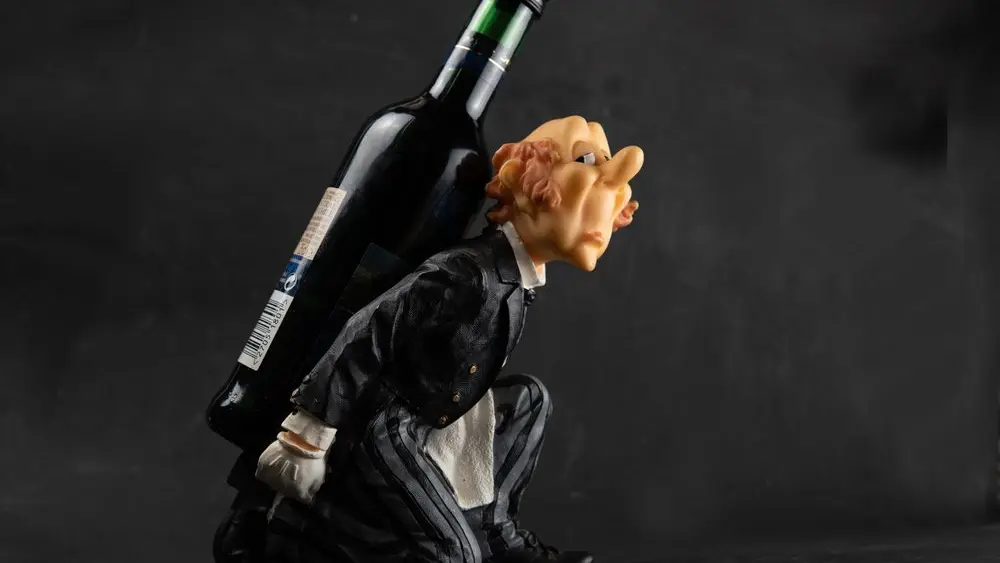In 2010, California saw 6,502 wildfires that consumed 108,742 acres, according to the National Interagency Fire Center. In 2017, the numbers jumped to 9,560 fires and 1,266,224 burned acres. This year might be higher. Wildfires are a threat to lives and livelihoods—and also to wine. Because smoke from fires can impart unpalatable flavors to wine, scientists are working on solutions for removing “smoke taint,” but as of yet there are few good options.
Back in the mid-2000s, I started purchasing some of my wine grapes from a few Mendocino vineyards. In particular, I’d become enamored by high-altitude vineyards that grew a distinct Hyde-clone Chardonnay. Those vines produced complex and rich wines that retained a wonderful acid backbone.
In 2007 large fires broke out in Northern California, laying down a blanket of smoke over Mendocino. When I visited the vineyard and tasted the grapes I found them to have a “campfire” aftertaste. Later I’d learn the perplexing and challenging effect that smoke taint can have on wine.
As soot and smoke settle on grape clusters, some of the chemical compounds adhere to the waxy layer of the grape skins. Over time these chemicals are incorporated and metabolized by the grapes, causing a host of negative issues to both flavor and physiology that are nearly impossible to remove from a wine. This might be okay if the flavors were pleasant, but they are not. The taste sensation is more akin to a stale ashtray than to toasty oak.
At the time we tried a variety of different techniques to save the wines affected. We used enzymes, filters and fining agents in an attempt to remove the off flavors. And to our surprise, a few of these techniques initially worked. But not for long. What we didn’t know then is that the offensive aromatics from fire can be masked by sugar molecules that bind to the harsh smoky chemical compounds through a natural process within the grape juice. But once these sugars are cleaved away through fermentation or aging, the mask can abruptly fall away and the off aromas return, sometimes with a vengeance.
This delayed response is due to the cleaving (hydrolyzing) of enough sugar molecule masks to push the amount of the volatile aromatic above the threshold of perceivable limits. This happened to me. In 2007, I bottled a wine made from smoke-affected Mendocino grapes that tasted delicious, but two years later it tasted more like licking a burnt log than sipping a refreshing chardonnay.
Dealing with Smoke Taint
When vineyards have been near wildfires during the growing season vintners have to make a decision: bring in the grapes or not. If they bring them into the winery, the winemaker’s first instinct is often to limit the amount of skin contact during processing and fermentation. This approach is most challenging with red wines because that’s where the wine gets its color and texture.
Some winemakers quickly heat the grapes to a very high temperature, referred to as flash detente. The idea is to extract color and flavor quickly, while at the same time volatilizing—or “blowing off”—the smoky aromatics. Beyond that, filters have been developed that claim to remove the offending smells. The problem is that they often remove some of the more pleasant aromas and flavors, too. Scientists are trying to find ways that limit or stop the hydrolysis of the sugar molecule by modifying the fermenting yeast strains or altering the genetic pathway within the grape itself. The idea is to keep the smoke taint bound up with the sugar, rendering it unperceivable. One issue with this approach is that within the saliva of humans resides an enzyme that cleaves the sugar anyway, resulting in the release of the smoky tastes at the exact moment when it matters most.
More vineyards are affected by wildfire smoke every year. Consequently all winemakers and growers are looking for ways to deal with what has become an all-too-common threat. My experience is that the only ways to limit the negative effects of wildfire smoke are to keep the fermented wine in separate press lots, blend the tainted wines with non-tainted selections to reduce the concentration below perceptible levels or—as a last result—sell wine on the bulk market, often at deeply discounted prices.
The future remains hazy, and a lot of that haze is smoke. Finding new and better techniques for dealing with smoke taint is a potentially lucrative business opportunity for innovative wine professionals and scientists who can solve this challenging and seemingly growing dilemma.
Author
-

Tim Carl lives, writes and teaches in Calistoga. He grew up in St. Helena and traces his Calistoga grape-growing roots back five generations. You can reach him at tcarl@northbaybiz.com.
View all posts



